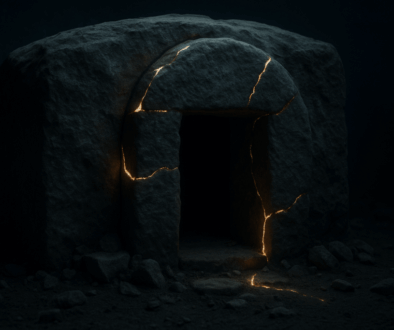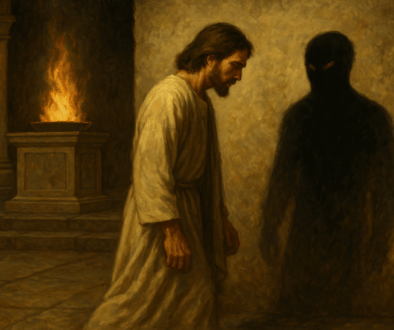Recovering the Logos: What Ancient Wisdom Can Teach Modern Minds
More Than a Word
We’re drowning in information.
The real question now isn’t what do you know, but what do you pay attention to?
Wisdom, real wisdom, doesn’t pile up data.
It listens for meaning. It aligns with depth.
And few words carry more depth than this one: Logos.
It’s been called “word,” “reason,” “logic”—
But Logos is more than language or intellect.
It’s the rhythm behind reality.
The pattern behind all patterns.
Not just something to be understood—
But something you walk with. Something you live by.
Heraclitus and the Fire Beneath Things
It starts with Heraclitus. Ephesus, around 500 BCE.
He said everything flows—panta rhei.
But beneath the river of change,
he saw something eternal:
The Logos.
“Although the Logos is common, most people live as though they had their own private understanding.”
— Heraclitus
Logos, to him, was fire. Law. Cosmic tension.
It held opposites together. It shaped harmony out of struggle.
Most of us miss it. But the wise tune in, and follow its lead.
Logos in Stoicism: Nature’s Mind
The Stoics picked up Heraclitus’ ember
and breathed it into flame.
For them, Logos was divine reason
threaded through the entire universe.
Not just out there, but in here too.
“Constantly regard the universe as one living being…
with one soul… acting with one movement…”
— Marcus Aurelius, Meditations 4.40
To live well, the Stoics said,
was to live in harmony with the Logos.
To move in step with the grain of the universe.
Reason, virtue, inner clarity—not imposed, but revealed.
Logos in the Jewish Imagination
At the same time, a different story was being told.
Not in Athens, but in Jerusalem.
Here, the Word—davar—wasn’t just an idea.
It was spoken. Active. Alive.
“By the Word (Logos) of the Lord the heavens were made…”
— Psalm 33:6 (LXX)
This Word created. This Word healed.
This Word called out in the streets like a woman crying wisdom.
She—Sophia—was present at creation.
Not abstract. Not sterile. But deeply relational.
She rejoiced in the world. Danced in it.
Logos and Sophia—mind and heart, order and delight.
Philo: Building the Bridge
Then came Philo, a Jewish philosopher in Alexandria.
Standing at the crossroads of Greek and Hebrew thought,
he began to blend them.
Logos, to Philo, was a mediator—
the bridge between heaven and earth.
A kind of divine template. A blueprint for all being.
“The Logos is the image of God,
by whom the whole world was made.”
— On the Confusion of Tongues, 146
Doesn’t that sound like Paul?
“The Son is the image of the invisible God…
by him all things were created.”
— Colossians 1:15–16
Philo’s Logos was not yet personal—
but it was close. Very close.
John 1: Logos Puts On Skin
Then came the thunderclap.
“In the beginning was the Word,
and the Word was with God,
and the Word was God…
And the Word became flesh…”
— John 1:1,14
Here, Logos becomes Jesus.
Not just order. Not just reason.
But touchable. Breakable. Human.
The pattern of reality puts on skin.
And suffers. And forgives.
And laughs with sinners.
And weeps at tombs.
In Him, Logos and Sophia meet.
Truth and tenderness.
Eternal mind and eternal heart.
Logos and the Tao: A Global Echo
Far from Jerusalem, far from Greece—
In the mountains of China,
another whisper emerged.
Tao.
The Way.
Not a god, not a force—
but the rhythm behind reality.
The path you don’t master, but follow.
“The Tao that can be told
is not the eternal Tao…”
— Tao Te Ching, Chapter 1
Tao and Logos speak the same music,
though one is played in silence,
and the other speaks in light.
Tao is the Logos unspeakable.
Logos is the Tao made flesh.
Without Logos, We Break
We need a center. A throughline.
Call it Logos. Call it Tao. Call it Christ.
But without it?
The soul fragments.
The world dissolves into noise.
“The Logos is that which speaks order into being from chaos.”
— Jordan B. Peterson
Without a guiding pattern,
the psyche spirals.
Nihilism isn’t just doubt—
it’s disorientation.
No meaning means no map.
And no map means no peace.
Living Logos
“Man does not live on bread alone,
but on every word that proceeds from the mouth of God.”
— Deut. 8:3
To follow the Logos is not to master doctrine.
It’s to align your life with something holy.
To live with depth. With care. With vision.
Jesus, the Logos made flesh,
invites us to that kind of life—
where wisdom meets wonder,
and reason bends to love.
He is the order behind stars
and the grace beneath guilt.
He doesn’t just explain the world—
He heals it.
And invites us to do the same.
Final Words
In a world of noise,
Logos is the signal.
In a world of striving,
Logos is the grace that’s already present.
In a world of fragmentation,
Logos is the hidden thread—
holding all things together.
“In him was life,
and that life was the light of all mankind.”
— John 1:4
So seek the Logos.
Listen for it.
Live by it.
Let it reshape you—
from the inside out.



